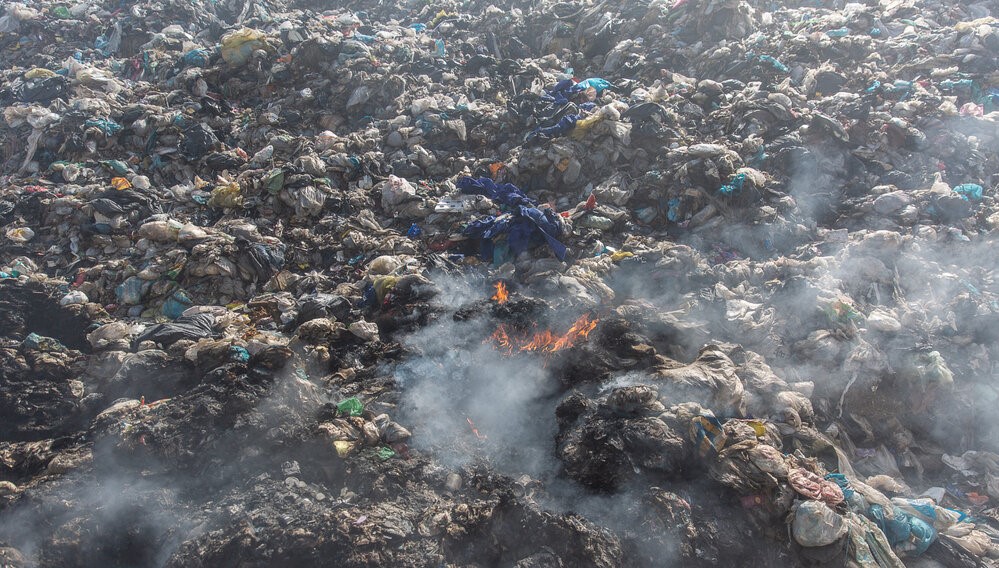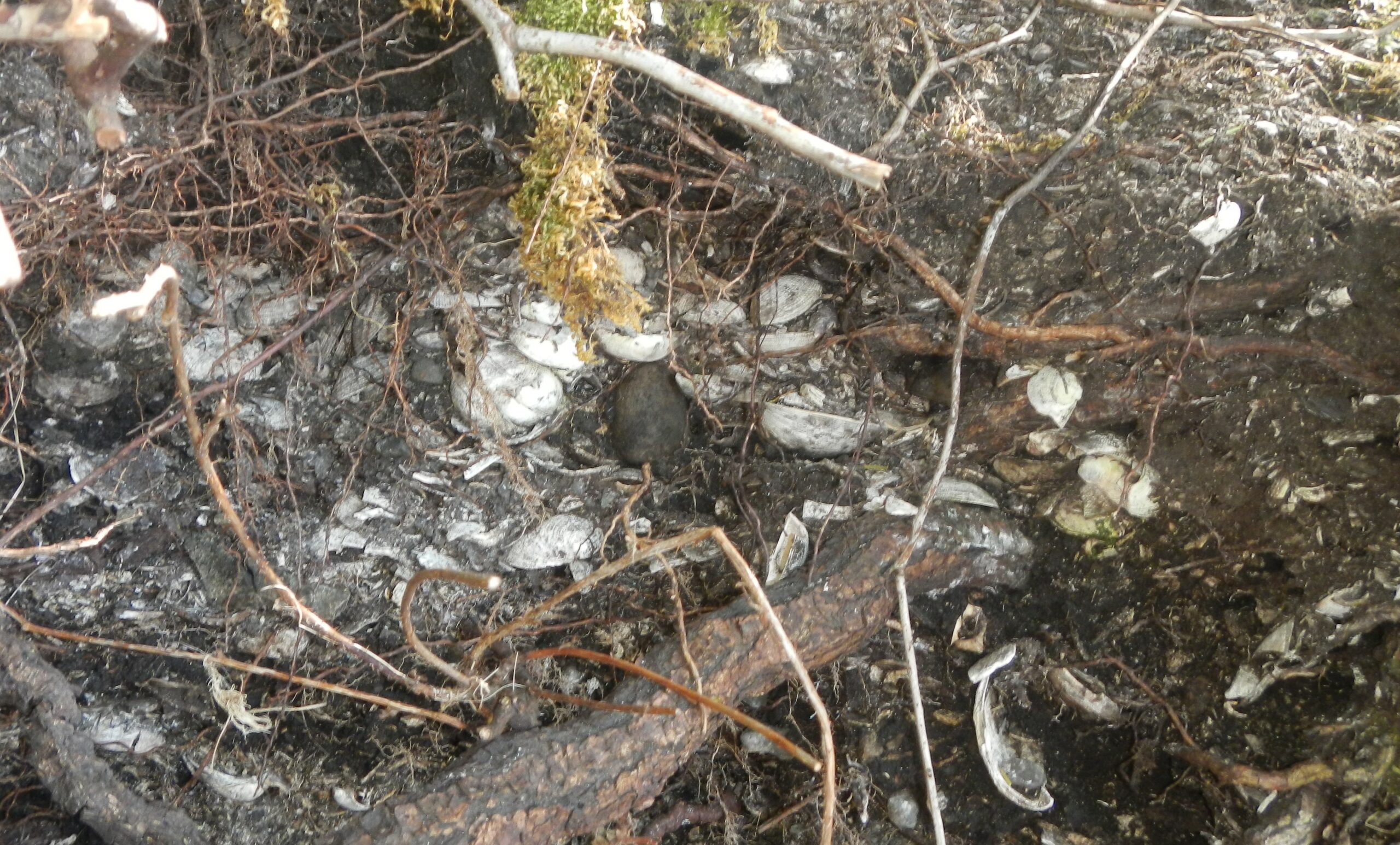14: Waste Disposal
- Page ID
- 25494
\( \newcommand{\vecs}[1]{\overset { \scriptstyle \rightharpoonup} {\mathbf{#1}} } \)
\( \newcommand{\vecd}[1]{\overset{-\!-\!\rightharpoonup}{\vphantom{a}\smash {#1}}} \)
\( \newcommand{\dsum}{\displaystyle\sum\limits} \)
\( \newcommand{\dint}{\displaystyle\int\limits} \)
\( \newcommand{\dlim}{\displaystyle\lim\limits} \)
\( \newcommand{\id}{\mathrm{id}}\) \( \newcommand{\Span}{\mathrm{span}}\)
( \newcommand{\kernel}{\mathrm{null}\,}\) \( \newcommand{\range}{\mathrm{range}\,}\)
\( \newcommand{\RealPart}{\mathrm{Re}}\) \( \newcommand{\ImaginaryPart}{\mathrm{Im}}\)
\( \newcommand{\Argument}{\mathrm{Arg}}\) \( \newcommand{\norm}[1]{\| #1 \|}\)
\( \newcommand{\inner}[2]{\langle #1, #2 \rangle}\)
\( \newcommand{\Span}{\mathrm{span}}\)
\( \newcommand{\id}{\mathrm{id}}\)
\( \newcommand{\Span}{\mathrm{span}}\)
\( \newcommand{\kernel}{\mathrm{null}\,}\)
\( \newcommand{\range}{\mathrm{range}\,}\)
\( \newcommand{\RealPart}{\mathrm{Re}}\)
\( \newcommand{\ImaginaryPart}{\mathrm{Im}}\)
\( \newcommand{\Argument}{\mathrm{Arg}}\)
\( \newcommand{\norm}[1]{\| #1 \|}\)
\( \newcommand{\inner}[2]{\langle #1, #2 \rangle}\)
\( \newcommand{\Span}{\mathrm{span}}\) \( \newcommand{\AA}{\unicode[.8,0]{x212B}}\)
\( \newcommand{\vectorA}[1]{\vec{#1}} % arrow\)
\( \newcommand{\vectorAt}[1]{\vec{\text{#1}}} % arrow\)
\( \newcommand{\vectorB}[1]{\overset { \scriptstyle \rightharpoonup} {\mathbf{#1}} } \)
\( \newcommand{\vectorC}[1]{\textbf{#1}} \)
\( \newcommand{\vectorD}[1]{\overrightarrow{#1}} \)
\( \newcommand{\vectorDt}[1]{\overrightarrow{\text{#1}}} \)
\( \newcommand{\vectE}[1]{\overset{-\!-\!\rightharpoonup}{\vphantom{a}\smash{\mathbf {#1}}}} \)
\( \newcommand{\vecs}[1]{\overset { \scriptstyle \rightharpoonup} {\mathbf{#1}} } \)
\( \newcommand{\vecd}[1]{\overset{-\!-\!\rightharpoonup}{\vphantom{a}\smash {#1}}} \)
\(\newcommand{\avec}{\mathbf a}\) \(\newcommand{\bvec}{\mathbf b}\) \(\newcommand{\cvec}{\mathbf c}\) \(\newcommand{\dvec}{\mathbf d}\) \(\newcommand{\dtil}{\widetilde{\mathbf d}}\) \(\newcommand{\evec}{\mathbf e}\) \(\newcommand{\fvec}{\mathbf f}\) \(\newcommand{\nvec}{\mathbf n}\) \(\newcommand{\pvec}{\mathbf p}\) \(\newcommand{\qvec}{\mathbf q}\) \(\newcommand{\svec}{\mathbf s}\) \(\newcommand{\tvec}{\mathbf t}\) \(\newcommand{\uvec}{\mathbf u}\) \(\newcommand{\vvec}{\mathbf v}\) \(\newcommand{\wvec}{\mathbf w}\) \(\newcommand{\xvec}{\mathbf x}\) \(\newcommand{\yvec}{\mathbf y}\) \(\newcommand{\zvec}{\mathbf z}\) \(\newcommand{\rvec}{\mathbf r}\) \(\newcommand{\mvec}{\mathbf m}\) \(\newcommand{\zerovec}{\mathbf 0}\) \(\newcommand{\onevec}{\mathbf 1}\) \(\newcommand{\real}{\mathbb R}\) \(\newcommand{\twovec}[2]{\left[\begin{array}{r}#1 \\ #2 \end{array}\right]}\) \(\newcommand{\ctwovec}[2]{\left[\begin{array}{c}#1 \\ #2 \end{array}\right]}\) \(\newcommand{\threevec}[3]{\left[\begin{array}{r}#1 \\ #2 \\ #3 \end{array}\right]}\) \(\newcommand{\cthreevec}[3]{\left[\begin{array}{c}#1 \\ #2 \\ #3 \end{array}\right]}\) \(\newcommand{\fourvec}[4]{\left[\begin{array}{r}#1 \\ #2 \\ #3 \\ #4 \end{array}\right]}\) \(\newcommand{\cfourvec}[4]{\left[\begin{array}{c}#1 \\ #2 \\ #3 \\ #4 \end{array}\right]}\) \(\newcommand{\fivevec}[5]{\left[\begin{array}{r}#1 \\ #2 \\ #3 \\ #4 \\ #5 \\ \end{array}\right]}\) \(\newcommand{\cfivevec}[5]{\left[\begin{array}{c}#1 \\ #2 \\ #3 \\ #4 \\ #5 \\ \end{array}\right]}\) \(\newcommand{\mattwo}[4]{\left[\begin{array}{rr}#1 \amp #2 \\ #3 \amp #4 \\ \end{array}\right]}\) \(\newcommand{\laspan}[1]{\text{Span}\{#1\}}\) \(\newcommand{\bcal}{\cal B}\) \(\newcommand{\ccal}{\cal C}\) \(\newcommand{\scal}{\cal S}\) \(\newcommand{\wcal}{\cal W}\) \(\newcommand{\ecal}{\cal E}\) \(\newcommand{\coords}[2]{\left\{#1\right\}_{#2}}\) \(\newcommand{\gray}[1]{\color{gray}{#1}}\) \(\newcommand{\lgray}[1]{\color{lightgray}{#1}}\) \(\newcommand{\rank}{\operatorname{rank}}\) \(\newcommand{\row}{\text{Row}}\) \(\newcommand{\col}{\text{Col}}\) \(\renewcommand{\row}{\text{Row}}\) \(\newcommand{\nul}{\text{Nul}}\) \(\newcommand{\var}{\text{Var}}\) \(\newcommand{\corr}{\text{corr}}\) \(\newcommand{\len}[1]{\left|#1\right|}\) \(\newcommand{\bbar}{\overline{\bvec}}\) \(\newcommand{\bhat}{\widehat{\bvec}}\) \(\newcommand{\bperp}{\bvec^\perp}\) \(\newcommand{\xhat}{\widehat{\xvec}}\) \(\newcommand{\vhat}{\widehat{\vvec}}\) \(\newcommand{\uhat}{\widehat{\uvec}}\) \(\newcommand{\what}{\widehat{\wvec}}\) \(\newcommand{\Sighat}{\widehat{\Sigma}}\) \(\newcommand{\lt}{<}\) \(\newcommand{\gt}{>}\) \(\newcommand{\amp}{&}\) \(\definecolor{fillinmathshade}{gray}{0.9}\)After having carefully read this chapter and completed the exercises within it and the questions at the end, you should be able to:
- Describe the main components of typical municipal solid waste,
- Explain where your personal waste goes, and what happens to it,
- Discuss ways in which the volume of waste can be reduced, and in particular how organic materials can be kept out of landfills,
- Describe the difference between a dump and a landfill,
- List the key features of an engineered landfill and explain why they are important,
- Summarize the process of leachate evolution and how it is affected by the composition of the waste,
- Describe which landfill gases are produced at the various stages of waste evolution in a landfill,
- Discuss why it is critical that landfill gases are not released to the atmosphere,
- Describe the two main ways that domestic solid waste can be used as an energy source,
- Describe the composition of domestic wastewater, and
- Summarize the ways in which wastewater can be treated.
- 14.1: The Waste Stream
- This page discusses global waste production disparities, highlighting that Americans and Canadians generate the most waste per person, while Indians produce significantly less. Specifically, in 2018, Americans produced over 900 kg of waste compared to just over 100 kg in India. In British Columbia's Victoria region, audits show organic material makes up the bulk of household waste.
- 14.2: Dumps and Landfills
- This page contrasts dumps and engineered landfills, highlighting the environmental hazards of dumps and the safeguards in landfills, such as impermeable barriers and monitoring systems to prevent contamination. It also discusses bird control strategies at landfills, including daily waste covering and using raptors for deterrence.
- 14.3: Leachate and Landfill Gas
- This page discusses the composition of landfills, emphasizing organic waste's role in generating leachate with hazardous compounds that threaten water quality and aquatic life. It details transformations of landfill waste over time and their impact on gas production.
- 14.4: Waste to Energy
- This page discusses energy conversion from waste via landfill gas combustion and incineration. Landfill gas management is crucial due to methane's environmental risks; flaring to CO2 is common, but utilizing it for electricity or heat is better. Incineration can recover energy from about 90% of municipal waste, using different technologies that often require sorting. Japan is noted for leading in waste-to-energy conversion rates.
- 14.5: Liquid Wastes
- This page discusses the generation and risks of untreated wastewater in North America, highlighting that daily household activities produce about 250 liters of wastewater filled with harmful substances. It outlines the three levels of wastewater treatment: primary, secondary, and tertiary, while noting rural reliance on septic systems.
- 14.6: Chapter 14 Summary and Questions for Review
- This page covers waste management in Chapter 14, highlighting the waste stream composition, differences between dumps and engineered landfills, and associated environmental controls. It addresses leachate and methane from landfills, and the treatment of liquid waste like sewage. The chapter emphasizes the risks of chemical leachate and the potential for harnessing methane for energy. Review questions promote reflection on waste reduction, landfill practices, and environmental monitoring.
Humans produce an extraordinary amount of waste. Most of it ends up in dumps or landfills (Figure \(\PageIndex{1}\)), and some is just left beside roads and trails. Few of us even think about the piles of waste we leave, nor its environmental implications.
Waste disposal is included in this Environmental Geology text because it is a geological problem. Geologists are involved in planning, designing and monitoring waste disposal sites because the geology of the site will determine how the surrounding area is affected by the waste.

Humans have always been wasteful, but for most of our history the resulting waste dumps have had little environmental impact, consisting of organic materials that either break down quickly with assistance from smaller organisms, or of materials that have almost no environmental implications, such as shells, bones, rock chips, and pottery (Figure \(\PageIndex{2}\)). Those types of wastes could easily be ignored when our numbers were smaller, but with nearly 8 billion people on the planet, and with wastes that include environmental poisons that last for decades or centuries, or that have serious climate-change implications, we have to change our attitudes towards waste.

The primary focus of this chapter is on what we call municipal solid waste, which is the waste that gets picked at the curb, or from bins in multiple-unit residences, commercial establishments, small industrial operations and institutions. The wastes from large industrial operations (e.g., smelters, pulp mills, refineries, or power stations (including nuclear sites)) are not covered here. Liquid wastes (e.g., sewage) are covered in Section 14.5.
When thinking about waste, we have to consider climate change, because accumulations of waste emit large volumes of the greenhouse gases carbon dioxide and methane. We need to do everything we can to reduce those emissions.
Media Attributions
- Figure 14.0.1 Garbage Dump of Sari by Amir Ali Razzaghi, 2019, Sari, Iran, CC BY 4.0, via Wikimedia Commons, https://commons.wikimedia.org/wiki/F...9-09-15_15.jpg
- Figure 14.0.2 Photo by Steven Earle, CC BY 4.0


